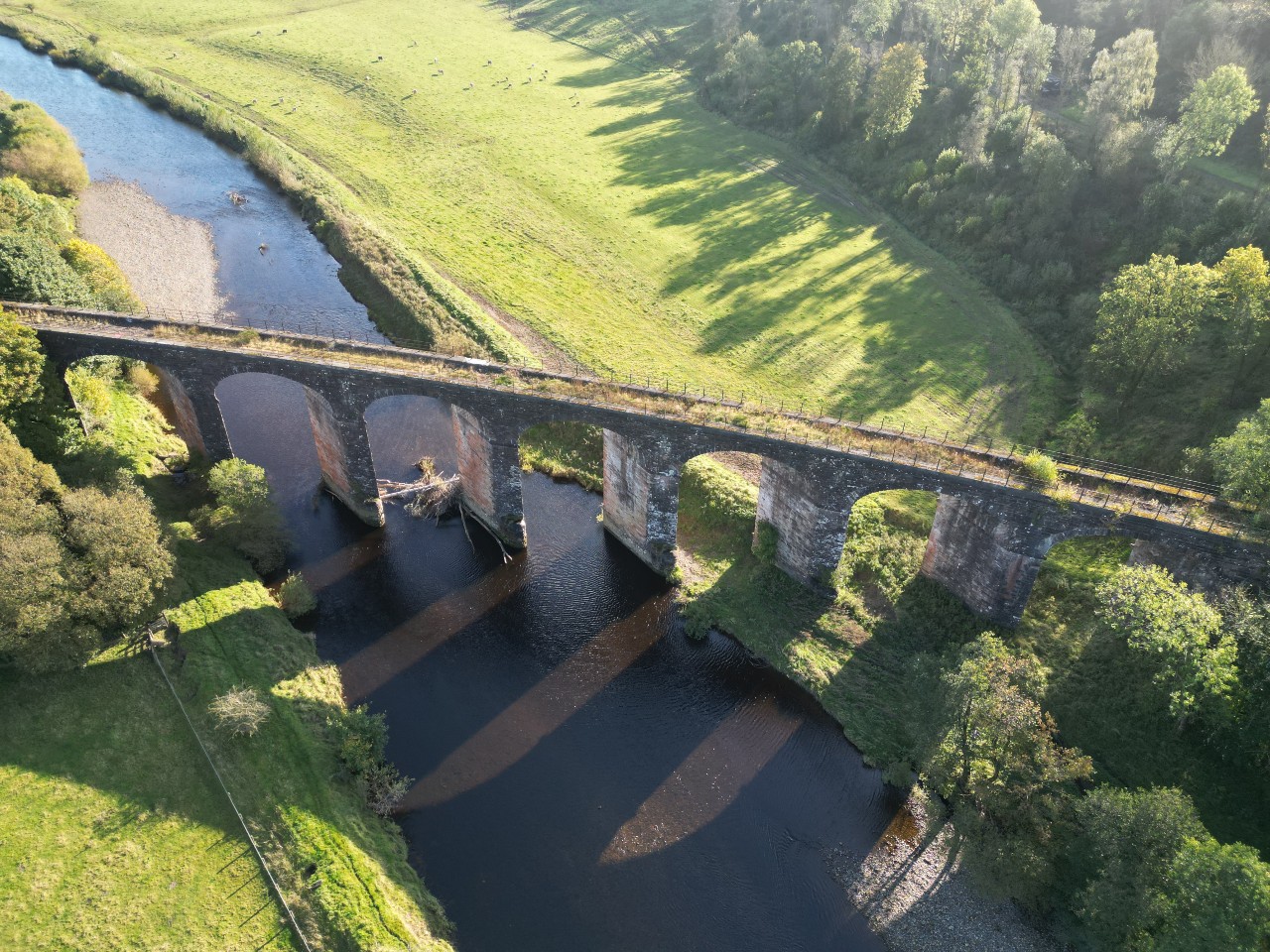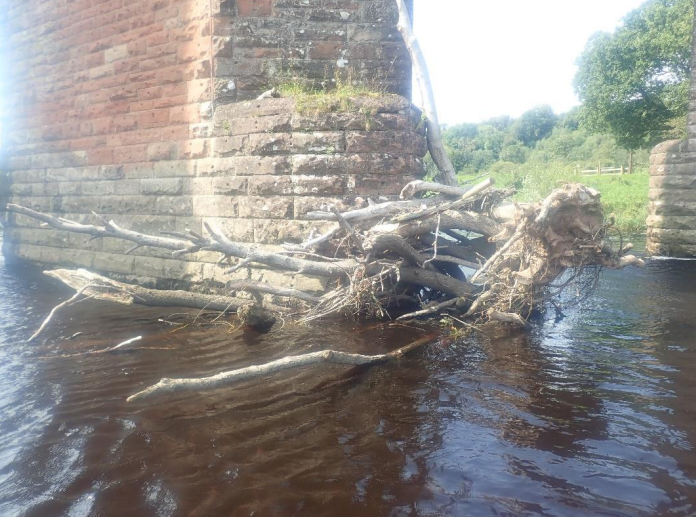Project profile: Riddings Viaduct
This listed viaduct located in both England and Scotland is undergoing major works to maintain its current beauty and preserve its long-term future.

Share this article
Location: Between Kirkandrews-on-Esk, Cumbria and Canonbie, Dumfries and Galloway
Contractor: Balfour Beatty
Open to the public? No
Completion: Completed in November 2025
History
Riddings Viaduct was built by the North British Railway as part of its branch from Riddings Junction, a station on the outside of Carlisle, to Langholm in Dumfries and Galloway. The line opened on 18 March 1864.
Prior to the opening of the line, areas around the England-Scotland border such as Langholm had been isolated. The introduction of the railway brought an economic boost to the area, with the local whisky and coal industries benefitting.
The unique location of the line meant that a journey from Langholm to Carlisle – less than 20 miles as the crow flies – would involve crossing the England/Scotland border three times, with one of these being over Riddings Viaduct.
The line and the viaduct ultimately closed in 1967 under the Beeching plans. Since then, the tracks have been lifted and the viaduct has sat unused.

About the structure
Riddings Viaduct is a skewed nine-span masonry arch viaduct faced in red sandstone ashlar with stone arch barrels supported by stone piers and abutments. The spandrels, parapets and wingwalls are constructed from a similar grade of stone.
The structure curves from the north towards the southwest over Liddel Water. It leads to the former Riddings Junction where the Langholm branch historically merged with the Waverley Route railway line.
The viaduct’s southern half is located in England, and its northern portion in Scotland. In both nations it enjoys listed status. South of the border is Grade II* while to the north it has category A status.

What is the project?
The works comprise repairs to the viaduct’s masonry and concrete, and the repointing of open joints in areas of the structure which are in poor condition. Repairs to the parapet handrails will also be undertaken.
All repairs are to be undertaken on a like for like basis using materials that match as closely as possible to the existing materials.

What stage is it at?
Work began in autumn 2024 and was completed in November 2025.
"Working on a structure that spans two countries brings with it some unique challenges. We have liaised with partners in both England and Scotland to ensure that our work meets the distinct heritage and ecological requirements of each country. Our work will preserve this iconic viaduct, allowing people in both England and Scotland to enjoy its beauty for many years to come."Colin McNicol, National Highways Engineer
